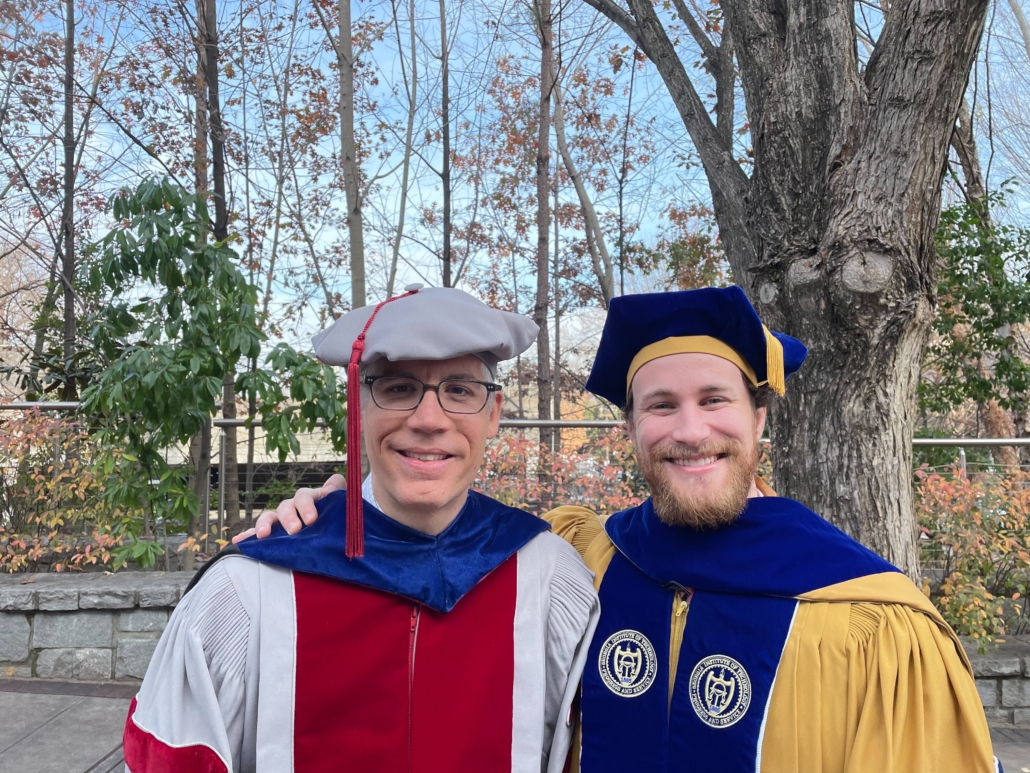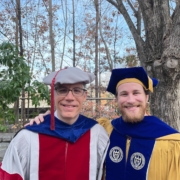Congratulations Dr. Colby Lewallen!
 Dr. Colby Lewallen successfully defended his Ph.D. thesis this fall. His work focused on developing new methods for intracellular robotics and extracellular impedance spectroscopy!
Dr. Colby Lewallen successfully defended his Ph.D. thesis this fall. His work focused on developing new methods for intracellular robotics and extracellular impedance spectroscopy!
Abstract: Epithelia are barrier-type cells that regulate the transport of materials into and out of the body. Dysfunction of these cells is implicated in numerous diseases such as cystic fibrosis, age-related macular degeneration, and diabetes. Since the discovery of induced pluripotent stem cells (iPSCs), scientists around the world have utilized iPSC-based therapies to halt, and potentially reverse, the progression of these diseases. For epithelia-based therapies, validation of tissue polarity and function is an essential component of a thorough physiological exam, and are commonly performed electrochemically, but existing methods are some combination of (1) destructive to the cells, (2) incomplete, (3) extremely difficult, and (4) low throughput. Therefore, in this work, novel tools and measurement techniques were developed to study epithelial cell function that addresses these issues. For example, an algorithm that automates the insertion of a pipette into the cytoplasm of a cell was developed (Aim 1). This algorithm outperforms a highly trained expert at a much lower operator skill level; enabling more labs to explore the physiology, drug toxicity, and disease processes of epithelia. In addition, a new mathematical model was developed that combines a technique called electrochemical impedance spectroscopy (EIS) with intracellular voltage data to extract membrane-specific properties of epithelia (Aim 2). Furthermore, experimental data demonstrating an inverse relationship between tissue capacitance and the median cell cross-sectional area is presented (Aim 3). Finally, a mathematical link between membrane-specific properties of epithelia and the time constant ratio, a property that does not require intracellular voltage data, is derived and experimentally tested. This link can act as a bridge between the comprehensive, yet slow and invasive, intracellular measurements and the fast, yet simple, extracellular measurements of epithelial function (Aim 3).



